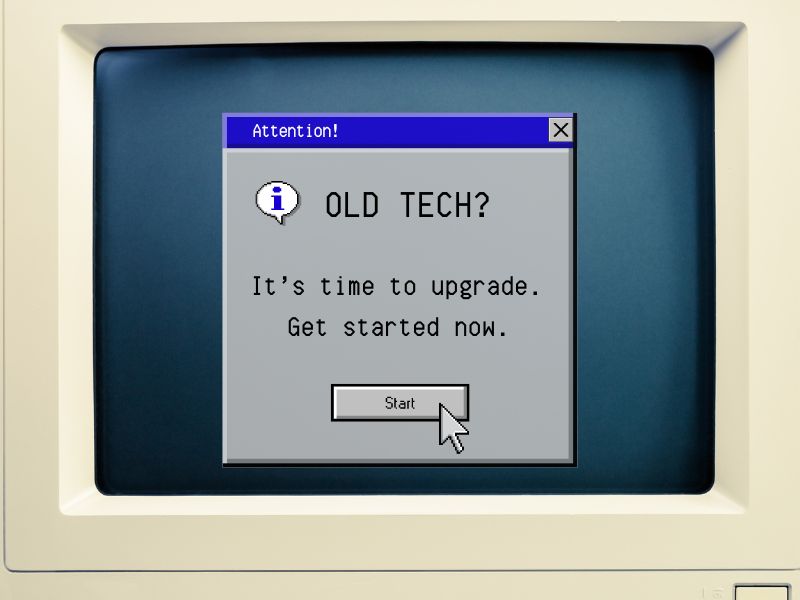Technology is always changing and staying ahead of the curve often means ensuring that your office technology is up to date.
Outdated technology can be a significant bottleneck, impacting productivity, security, and overall efficiency. But how do you know when it’s time to make the upgrade?
Here are three big signs that it’s time to update the old technology around your office.
1. Decreased Productivity
One of the most telling signs that your office technology needs an update is a noticeable dip in productivity.
Are your employees spending more time waiting for applications to load or dealing with frequent system crashes?
Old hardware and software can slow down everyday tasks, leading to frustration and inefficiency. When the tools your team relies on become a hindrance rather than a help, it’s clear that an upgrade is overdue.
Symptoms of Decreased Productivity:
• Slow boot times and application launches.
• Frequent system errors and crashes.
• Delays in processing data and running applications.
Upgrading to faster, more reliable technology can significantly boost productivity, allowing your team to focus on their work rather than troubleshooting technical issues.
2. Security Vulnerabilities
As technology ages, so does its ability to protect against modern cyber threats.
Older systems may no longer receive security updates, leaving them vulnerable to malware, ransomware, and other cyberattacks.
With the increasing sophistication of cyber threats, maintaining robust security is more critical than ever.
Indicators of Security Vulnerabilities:
• Unsupported operating systems and software.
• Outdated antivirus and security software.
• Increased frequency of security breaches or attempted attacks.
Updating your technology ensures that your systems are protected by the latest security patches and updates, safeguarding your sensitive data and maintaining compliance with industry regulations.
3. Windows 10 End of Life
Another crucial factor to consider is the impending end of life (EOL) for Windows 10 in 2025.
With support for Windows 10 winding down, now is the time to prepare for the transition to Windows 11.
However, not all older systems are capable of upgrading to Windows 11 due to its more demanding hardware requirements.
This makes it essential to evaluate your current technology and determine if it can handle the new operating system.
Key Points about Windows 10 EOL:
• Windows 10 will no longer receive security updates after 2025.
• Systems unable to upgrade to Windows 11 will be vulnerable to security risks.
• Assessing and upgrading your hardware now can ensure a smooth transition.
By addressing these concerns proactively, you can avoid last minute scrambles and ensure that your office remains secure and efficient.
Take Action Now
Recognizing these signs and taking proactive steps to update your office technology can save your business time, money, and headaches in the long run.
By investing in modern, reliable technology, you’ll boost productivity, enhance security, and ensure compatibility with the latest innovations.
Don’t wait until your outdated systems become a significant liability—start planning your technology upgrade today.
At TREYSTA, we understand the importance of keeping your business technology current and efficient. Contact us today to learn how we can help you upgrade your office technology and stay ahead of the curve.



